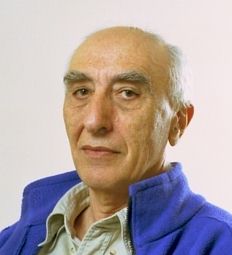Boris Artashegovich Babaian

hardware software keywords see also related subjects |
Achievement Created Russia's first super computer.
In the United States, Seymour Cray is widely recognized for building the multimillion-dollar supercomputers that formed the technological foundation of the Cold War. He has a counterpart in the former Soviet Union: Boris Babaian. After 40 years with the Russian government's Institute of Precision Mechanics and Computer Technology, where he led the development of the Elbrus supercomputers underpinning the Russian missile defense system and space mission control center, Mr. Babaian has turned his focus to private industry. As chairman and chief technologist of Elbrus International, he and the same team that developed three generations of supercomputers are providing contract services like software and microprocessor design to Western companies. INDEPENDENCE DAY The economic changes that swept through Russia early this decade made it difficult for Mr. Babaian's team to continue working as a government entity, and in 1992 the team began the long process of privatization. That year it also made significant inroads into the U.S. IT market when it started providing technical support for outsourced projects and joint software development services to Sun Microsystems, Compass Design Automation (now owned by Avanti), and several smaller companies. Officially launched in 1997, Elbrus International is Russia's largest computer development firm, with offices in Moscow, St. Petersberg, and Novosibirsk and more than 400 employees. Mr. Babaian is hoping to bring two major innovations to market, based on U.S. patents he filed starting in 1985. The first is a binary compiler (software that translates a high-level programming language into machine language) that accommodates greater cross-platform compatibility without the typical compromise in speed. And the second is a new microprocessor architecture that supposedly improves on the logic design of the Explicitly Parallel Instruction Computing model being developed by Intel and other U.S. companies. ELBRUS ON THE TABLE The partnering process has been slow going because many microprocessor experts doubt the viability of Mr. Babaian's Java-like proposition: "Rewrite never, run efficiently anywhere." As of August one major European firm was investigating the company and several U.S. firms had expressed interest, but no deals had been closed. But according to Mr. Zappettini, in addition to the strength of Elbrus's team, the main selling point of this investment opportunity is Mr. Babaian's reputation as a computer scientist. He was awarded the two highest honors in the former Soviet Union: the USSR State Prize for Achievement in 1974 in the field of computer-aided design and the Lenin Prize in 1987 for the Elbrus-2 supercomputer. Mr. Babaian's legacy for Russia will closely resemble Mr. Cray's for the United States: machines that were essential for solving their countries' greatest national challenges. But Mr. Babaian's transition into the private sector may earn him something further--the distinction of being one of post-Cold War Russia's first internationally minded technology entrepreneurs.(1)
Chronology 1933 Born 1950's His team built its first computers in the 1950s. 1978 He also built the first superscalar computer in 1978, ten years before commercial applications appeared in the West. With the help of Babaian's computers, the Soviet Union was able to build its nuclear and missile systems and space program. 1984 Corresponding Member of the Division of Informatics, Computer Technologies and Automation Member of the Division of Informatics, Computer Technologies and
Automation.
Honors and awards
|
![]()
| Last Updated on September 14, 2002 | For suggestions please mail the editors |
Footnotes & References
| 1 | RUSSIA'S SEYMOUR CRAY By Nikki Goth Itoi The Red Herring magazine November 1, 1998 www.redherring.com |